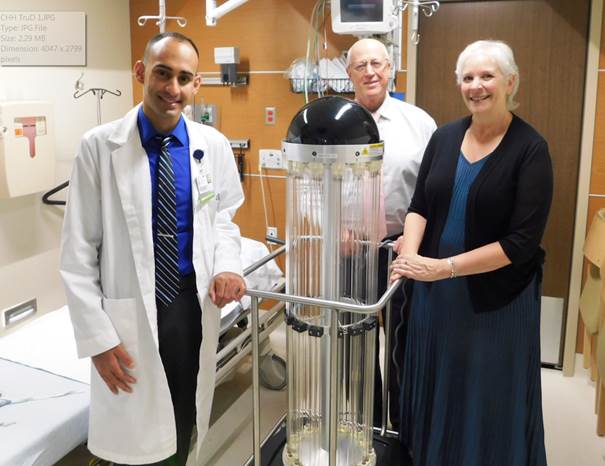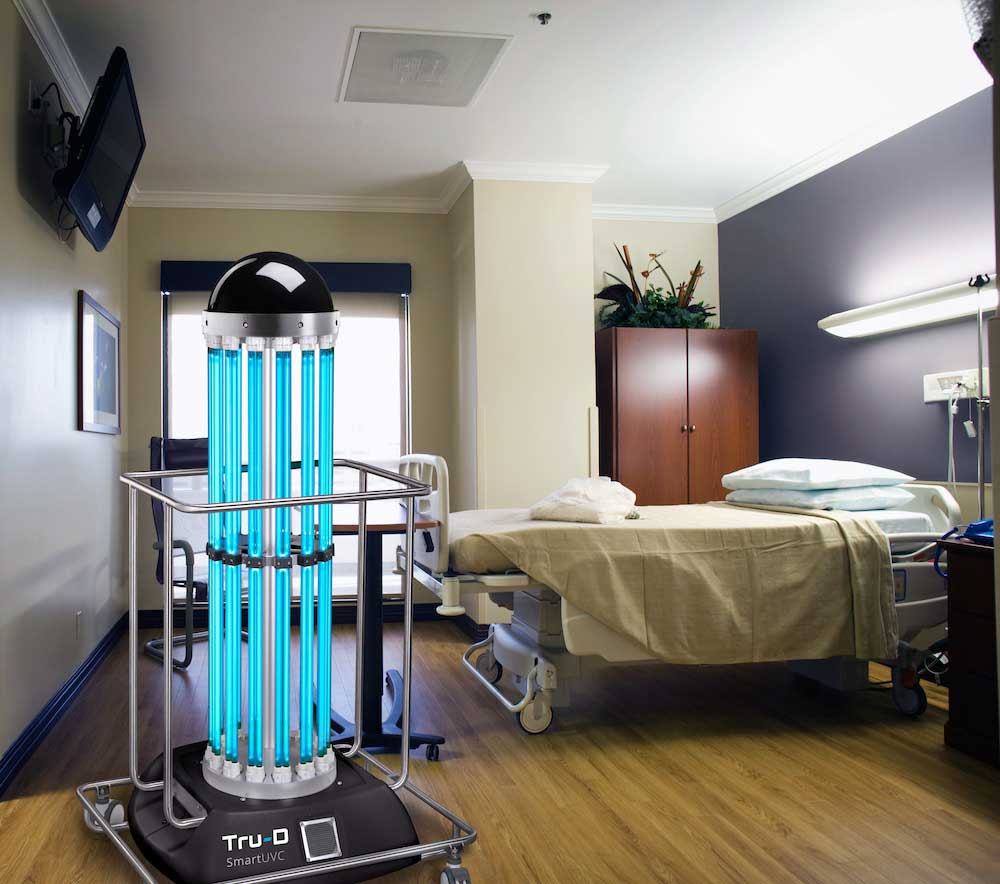Charlotte Hungerford Hospital of Torrington recently added Tru-D SmartUVC, a germ-eliminating ultraviolet disinfection robot, to its disinfection routines that protect patients from serious hospital-acquired infections.
The device is currently being used in all isolation rooms of patients on discharge/transfer, and circulates throughout the hospital to the operating suites, Emergency Department and patient care areas in the main hospital. It was made possible by a grant from The Draper Foundation Fund, a fund of the Northwest Connecticut Community Foundation.

In the U.S., one in 25 patients get an hospital-acquired infection. The staggering cost of a hospital-acquired infections to both the patient and hospital also motivated leadership to protect patients’ pocketbooks and the hospital’s bottom line by implementing UV technology in disinfection protocols. The U.S. Centers for Disease Control and Prevention recently conducted a multi-site randomized clinical trial, which concluded that a combination of manual cleaning and measured-dose UV light results in a 30-plus percent reduction of infections for patients who stay in rooms previously occupied by infected patients.
“The acquisition of UV technology is simply another way that we’re working to safeguard the well-being of every single patient who walks through our doors and protect the integrity of our health care environment,” said Paul Gentile, Infection Control and Prevention Coordinator at Charlotte Hungerford Hospital, which is now affiliated with Hartford HealthCare. UV technology has been found to be effective in decreasing the incidence of HAI’s in many hospitals, which could reduce disease mortality and morbidity in hospitalized patients.
Tru-D works by generating UV light energy that modifies the DNA or RNA structure of an infectious cell. After manual cleaning has been completed by environmental services, the UV device is placed into the patient’s exam room. The device’s patented technology calculates the amount of UVC energy needed to disinfect the area while compensating for room variables such as size, shape, surface reflectivity and contents to then deliver a lethal dose from a single location, effectively eliminating lingering pathogens in the space.
This innovative technology, coupled with Tru-D’s high-efficiency germicidal mercury lamps, kills deadly germs such as Ebola, methicillin-resistant staphylococcus aureus (MRSA), Clostridium difficile (C. diff), Middle East Respiratory Syndrome (MERS), Norovirus and Enterovirus D68.
“Hospitals that provide an extra level of care by disinfecting rooms with Tru-D are taking a proactive step in ensuring patients and staff have a clean and germ-free environment,” said Chuck Dunn, CEO and President of Tru-D SmartUVC.
The robot is operated by a remote control outside the room and features an application that tracks infection control data while simultaneously uploading the information to the hospital’s web portal. Set up is quick and easy and does not require input of room measurements or covering of windows and vents. The robot can disinfect an entire room from one location, eliminating the need to move it to multiple places in the room. Once disinfection is complete, Tru-D notifies the Environmental services via audio and/or text message that the process has finished.

